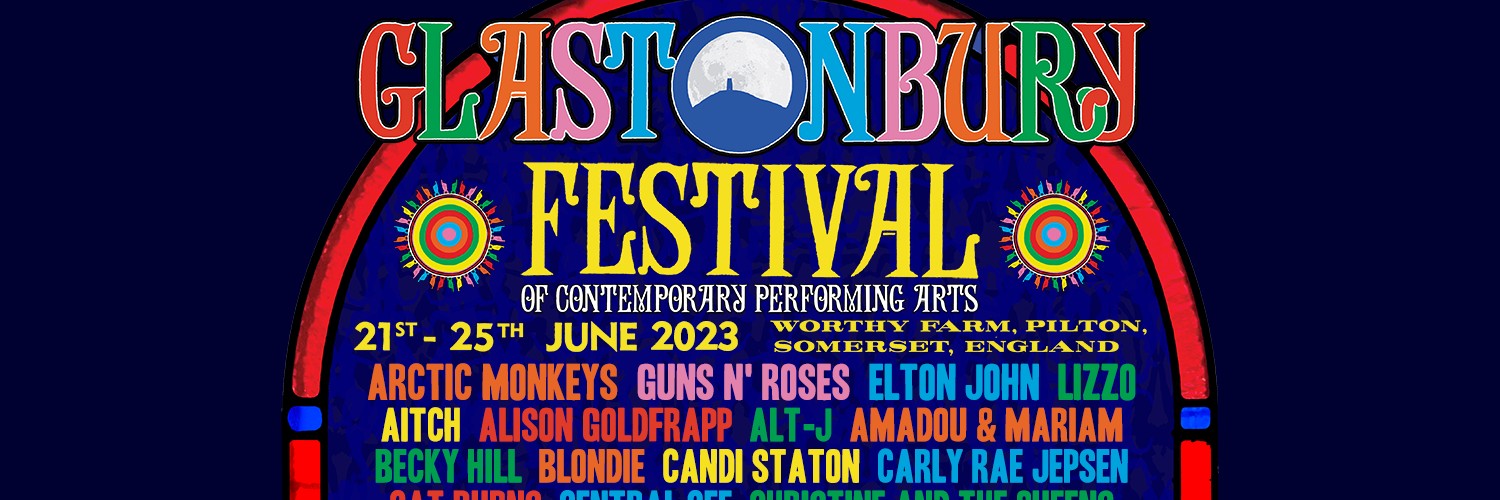As Glastonbury festival kicks off this weekend we ask why is there a lack of female headliners on this year’s bill and where are the next generation of festival headliners coming from.
When Emily Eavis announced a slate of all-male Glastonbury headliners for 2023’s festival back in March, she blamed the lack of a female headliner on the ‘pipeline.’ Which sounded like a poor excuse. When Glastonbury could have given acts like Lizzo, or Lana Del Rey who were already on the bill, a headline slot on the Pyramid stage.
Announcing in March that Elton John will conclude the 2023 edition, Eavis confirmed that Arctic Monkeys would headline Friday on the Pyramid stage, while Guns N’ Roses would headline the Saturday.
Lizzo will open and has joint headline billing. “She could totally headline,” said Eavis, adding that the Pyramid stage often sees bigger crowds in the afternoon than at night. “Many of the artists could, but the headline slot had already been promised to someone else.”
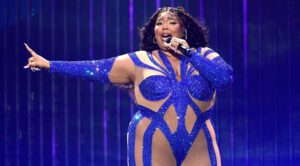
There was an online backlash to the comments, reflecting the fact that Glastonbury’s bill is always crammed with fantastic female artists who could headline and it was also anticipated the likes of Taylor Swift or Madonna were in the conversation for headlining this year’s event.
Nadia Khan an artist manager tweeted: “Glasto could quite easily give a headline slot away to an under-represented artist group to be part of the necessary change in the industry.”
Suddi Raval tweeted “Emily Eavis says the issue is that there’s a “pipeline” problem why they have an all-white male-only line up to headline the Pyramid stage. WTF. Just ask any black women. That’ll solve your pipeline problem.”
Lisa Pinky Ward tweeted: “I love you Glastonbury but nothing says it’s nearly #IWD2023 like announcing 3 male headliners on the Pyramid. Fancy committing to all women on the Other Stage or Park Stage? Emily Eavis eyeballing you here. It’s 2023…”
“The music industry needs to invest in more female musicians to create future headliners” explained Eavis. “We’re trying our best so the pipeline needs to be developed. This starts way back with the record companies, radio. I can shout as loud as I like but we need to get everyone on board.” Some said we are “trying” isn’t the best excuse and pointed out that 52% of the 54 names on the first lineup announcement were male. But to be fair to Emily Eavis she has long been an advocate of more balanced bills, she said she was “entirely focused on balancing our bill. It’s not just about gender, it’s about every aspect of diversity.”
Diversity of bills is also important. Glastonbury made an important statement when it chose Jay Z to headline the festival in 2008. This year, 46% of its initial 54 names feature unrepresented racial groups: including Wizkid who will headline the Other stage on Friday, Gabriels who is likely to be a highlight of the early evening on Friday, and Loyle Carner who tops the bill on West Holts on the Saturday. “We’re probably one of the only big shows that’s really focused on this” she claimed.
Glastonbury isn’t alone. Other festivals including Download, Kendall Calling, Reading and Leeds, and a raft of others, have male-dominated and largely white, headline bills this year.
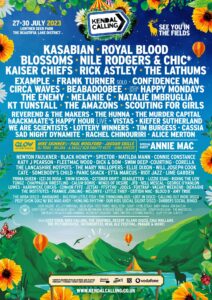
According to the BBC, a study of the UK’s biggest music festivals found that 149 headline acts – or 74.5% – are male solo acts or all-male bands. Meanwhile, 24 headliners – or 12% – are bands featuring a mix of male and female musicians, with just one headline act identifying as non-binary.
In 2021, The Isle Of Wight Festival’s initial line-up was reported to be 73% male, while TRNSMT’s was 61% male. Kendal Calling also announced an initial line-up with 79% male performers.
Overall, Glastonbury appears to be moving in the right direction. Further down the bill, this year’s lineup features Christine and the Queens, Fever Ray, Shygirl, Adwaith, Kelis, Lana Del Rey, and Blondie, and girl band Flo. Glastonbury has always championed new music. It has also taken risks in the past, Pulp replaced The Stone Roses as a headliner in 1995 and stole the show and Stormzy headlined in 2019, when he wasn’t the biggest act the world. But is the festival at the point where it’s such a huge global event that it can’t gamble on the headliner? But would it be a gamble anyway when some of the world’s biggest artists are women?
Certainly, narrowly billed, nostalgia and lad-heavy fests could learn a lot from the festival’s intentions and how it showcases new artists on its introducing stage and the diverse spread of genres that are showcased every year across the festival. But the fact that Eavis didn’t feel that any of the female artists on the bill were as “bankable” as Guns N Roses to headline, who let’s face it peaked in the late 80s and early 90s, reflects the fact that she didn’t see any of the female acts on the bill as much as a draw, not just for those attending but for the global audience at home as much, as a nostalgic reformed rock band.
Glastonbury sells out well in advance so it wouldn’t have made much difference to ticket sales, as some festival goers don’t go to Glastonbury just for the headliners but for the experience and the many stages and tents, and maybe the chance to glimpse some of the biggest acts in the world.
But she also made a good point in one that these imbalances in festival bills reflect deeper issues of gender disparity in music, the workplace, and society, with the gender pay gap. Plus the issues with a broken pipeline for developing the next generation of headliners in this country.
Vick Bain, who set up The F-List – an online directory of female musicians available to play at festivals – says the issue spans the entire music ecosystem; from inequality in education to barriers in the music business. “There’s still a lot of sexism, and that can be overt or covert, and a lot of stereotyping, which is restrictive to women,” she says. “Women in music education will be encouraged to go into music teaching, rather than performing, or will be rewarded to be singers rather than instrumentalists.”
“Then, women are far less likely to be picked up by an A&R, far less likely to be invested in, far less likely to get a manager or an agent, and all of these things mean you’re less likely to be chosen to play on festival stages.”
A report by Bain published in 2019 revealed that female acts and songwriters counted for just 14% of those signed to 106 British music publishers and that women made up under 20% of those signed to 219 British record labels. It goes back to the number of female artists who are signed, booked and that appear on radio playlists. There are deep issues around sexism, misogyny, and racism, we have seen over recent years the stories of music industry abuse of power, highlighted by the #Metoo and on a smaller level the backlash towards new female acts like the Last Dinner Party, Panic Shack, and Picture Parlour, who have been tarred with “industry plant” and trolled online, even upon their first release. It’s not always a welcoming industry for young women or people from minority groups.
Matt Griffiths of Youth Music reacting to the story explained “This, yet again, highlights the systemic issue regarding lack of representation in the music industry. Emily Eavis is right about the pipeline problem and that more needs to be done. But until we all address & ACT on the root causes, we’ll keep seeing festival line-ups like this.”
Standon Calling were one of the first and only major UK music festival to reach the Keychange pledge last year, and this year have gone further in ensuring that have an even split across all their headline slots as well. Last year Self Esteem was headlining the all-female night on the second stage, and had become the first artist in the festival’s 17-year history to go from headlining the second stage to headlining the main stage the following year.
Currently, 55% of the lineup are artists identifying as female or non-binary, an improvement from 30% in 2018.
Many of this year’s festival bills are relying heavily on nostalgic names, to fill out their bills often featuring male dominance. These are seen as banker names, but when the well runs dry who will take over?
He also pointed out that Glastonbury could invest in the pipeline of grassroots and independent music, the place where the next headlines are often nurtured. “Glastonbury Tickets are £340.00.
£0.00 pounds are being invested into the Pipeline that’s apparently not producing the headliners they need.”
In 2021 the PRS Foundation began its Keychange initiative, calling on festivals to pledge to have line-ups featuring 50% women and gender minorities by 2022. Festivals like Focus Wales, Love Supreme, Green Man, and others, have worked towards that aim but there’s still a long way to go.
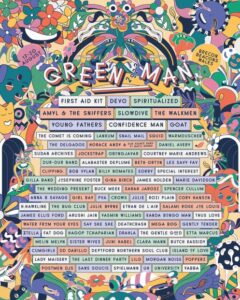
Garber explains: “Until there is a huge overhaul in the people running businesses in the music industry then there will never be enough change. There needs to be more diversity and representation at the top to help the next generation.” He continues, “I love what Keychange are doing, and I will be part of their mentor scheme for this year in association with the brilliant Shesaidso. I think the plans that Francine and the team have are brilliant and we are fully behind that. There are definitely enough amazing acts to do the 50/50 credibly.”
“It’s really important to have schemes and initiatives like Keychange as they raise awareness of the issue in the first place. When we initially signed up to Keychange in 2018, female artists accounted for around 25-30% of our programming” Rob Lee explains “At the time, increasing to 50% seemed like a huge challenge but we wanted to begin addressing this by actively booking more female and non-binary artists across all our stages. It has been challenging at times and it certainly hasn’t happened overnight, but we’ve managed to increase year on year using creative programming approaches to achieve this. If we hadn’t signed up to Keychange when we did, then we may have only started to address any gender imbalance in our programming now.”
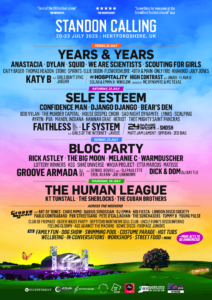
The issues go beyond female and underrepresented genres too, it goes to the deep issues within the ‘pipeline’ for new music in this country. In the face of the double hits of Brexit and Covid, arts cuts, closing venues, shrinking opportunities, cuts to local BBC radio, fragmentation of the media, pitiful streaming rates and an attention economy swamped by 1000s of songs released onto Spotify each day, and a nostalgia industry that increasingly dominates playlists and festival bills, it’s harder to exist and grow as an emerging artist let alone stand out in the static or get heard. There’s a yawning inequality between the haves and have nots in music, as Tech giants and 1% of artists on major labels pool the wealth and attention. Help Musicians charity found that an astonishing 98% are struggling to make a living.
“We support the grassroots organisations and people making sure music isn’t just for the privileged. But the sector is facing cuts whilst demand for funding is higher than ever (we’ve seen a 33% increase in applications over the past year)” explained Griffiths “Sections of the music industry are making big money, many others struggling to get by. I’d love to see social enterprise models adopted. Profits ploughed back into the ecosystem including the grassroots infrastructure for young people we support.”
Paul of the music blog The Devil has the Best Tuna, explained that the pipeline is broken and this goes beyond the clear underrepresentation of female acts but to issues facing the grassroots music scene itself: “having judged the Glasto Emerging Talent Competition since 2011 there are many amazing artists and bands but systematically the opportunities for them to progress & sustain a career have been stripped away. Closure of venues, Brexit making overseas touring almost impossible, major labels playing it safe, mainstream early evening music programmes (like TOTP) disappearing.”
“There was a time bands could make a living on the back of record sales, then it was touring, then it was merchandising. Music has become a hobby because it can’t sustain a career. Spotify etc has made it worse not better it’s turned music into even more of a disposable commodity if the first 30 seconds don’t grab you you can just move onto the next track. It’s heartbreaking to see how the music industry has become like McDonalds serving up generic, processed, high calorie music for the tik tok age. Also Record Store day, which started with great intentions, has stifled the pipeline. The labels are investing in safe, “classic”, bands and artists instead of investing in new challenging artists.”
When most new artists or bands are still paid between £50-£100 for a support slot, and yet the cost of travel, rehearsal rooms, and equipment hire continue to go up, its very hard to even break even on small tours, with many loss making. Manchester based artist Lonelady agrees there’s a deeper economic problem “ The real reason I’ve been playing solo is because I can’t afford a band. A £12 ticket isn’t enough for me to be able to pay even a basic, stripped-back crew. Ultimately fair ticket pricing is desperately needed – not ridiculously inflated but not too pointlessly low. ..”
Sam Duckworth aka Get Cape. Wear Cape. Fly believes the next generation of artists is nurtured even earlier on, arguing on Twitter for more basic access to equipment, instruments and learning early on: “3 simple policies: 1. Instrument libraries available – via schools, that allow free rental of good quality, maintained, instruments. This can be funded in many ways, but should be seen as a practical investment in education. Ideally supplied with a depth of teaching resources.”
“A youth / community centre can only be closed if an equivalent or better is opened first. Not the promise of. Any places where a historic centre was closed, without replacement, can apply for grants to repurpose empty shops as proof of concept for a permanent facility.“
“Organisations like Youthmusic and Music Venue Trust should be further resourced by those at the top, not just provision of services but also to continue research and development of modern interventions and preservation of assets of community value, including staff.”
The grass roots music venue isn’t Step one. It’s Step 2. We need things like instrument libraries. Spaces where children can play noisy instruments who live in places where that is not possible. After school clubs that don’t feel under threat. The industry is full of people who were given that chance in the 90s but those places disappeared, especially in non city Britain. Any pipeline must include those under 18 who cannot afford the basics.
Safe, subsidised rehearsal rooms. Cheap venue hire with a model that allows young bands to reinvest profits from gigs in quality recordings. Development of other parts of the music landscape – broadcast, design, promotion.
Music isn’t just about economics. We run the risk of it not being something everyone can enjoy, by focusing on the financial ecosystem and not the holistic one.”
Of course not every band will make it, not every band will move beyond a hobby or a vocation but the conditions have to be there to support and nurture the next generation of artists who might.
The blogger and broadcaster Neil March points out in his blog “One problem, even with artists who have great potential, is not knowing when the right time is to take a particular path. For example, if you have barely played a gig and have less than 100 social media followers for your artist account, you should not be engaging a plugger because it is money down the drain. Get out and build a local following if you can.”
Blowtorch Records offered “I’m not saying we have all the answers at Blowtorch – we are a tiny label perched on the edge of Europe. However the trajectory of a band called Adore, with whom we recently started working, does illustrate Neil’s point. They have no music on Spotify or videos on YouTube yet there is already a buzz about them in Ireland as they sell out small capacity gigs.
They are building recognition through social media. They network with like-minded bands. And they have a brilliant band logo which suits all kinds of merch.
We work with an excellent company called Sticker Mule who produce tees, custom stickers, labels and badges (note to all DIY bands – online ordering & proofs, quick turnaround and free shipping). After a recent sticker campaign, someone in Galway told me they went into their bathroom the day after an Adore gig and one of their stickers was on the mirror. Priceless.”
The structural issues around gender, racial disparity and financial inequality will go on whilst the music industry and the government fail to address systematic challenges to arts and music in this country and fails to change representation and the lack of diversity of who is also sitting at the top tables. That includes taking an overall view producing fairer royalties, investing in infrastructure and young people, protecting rehearsal spaces and grassroots venues, thinking about how artists can connect with their fans in deeper ways, allowing for diversity of media and representation and giving opportunities and support to emerging musicians as they grow their audiences.
Youth Music’s Griffiths argued in the Guardian earlier this year that other countries support pop musicians in the way the UK does opera. He points out the biggest issue is “Low pay,” he says, “is another thing making music the preserve of the better-off.”
4AD general manager Jason White agrees. “If you’re 25,” he says, “you’ll earn more working in a supermarket than most musicians do. It’s a reflection of society. You’re either the superstar or you’re scraping away.”
I think we can all agree that there are ALWAYS amazing female artists in this country – maybe they just need more of a chance? More of a platform? More of an even playing field, when they are often faced with sexism or overlooked for male bands who bookers claim have a so-called more “bankable name”. We can only hope that Keychange makes an incremental difference and that, as festival bills become more balanced and diverse lower down, the pool of female artists for bookers to pick from becomes even greater. To make sure there IS a pipeline for new music and new female artists and bands we need safeguards, investment, support from the industry and government and bravery from festivals to make change happen.

